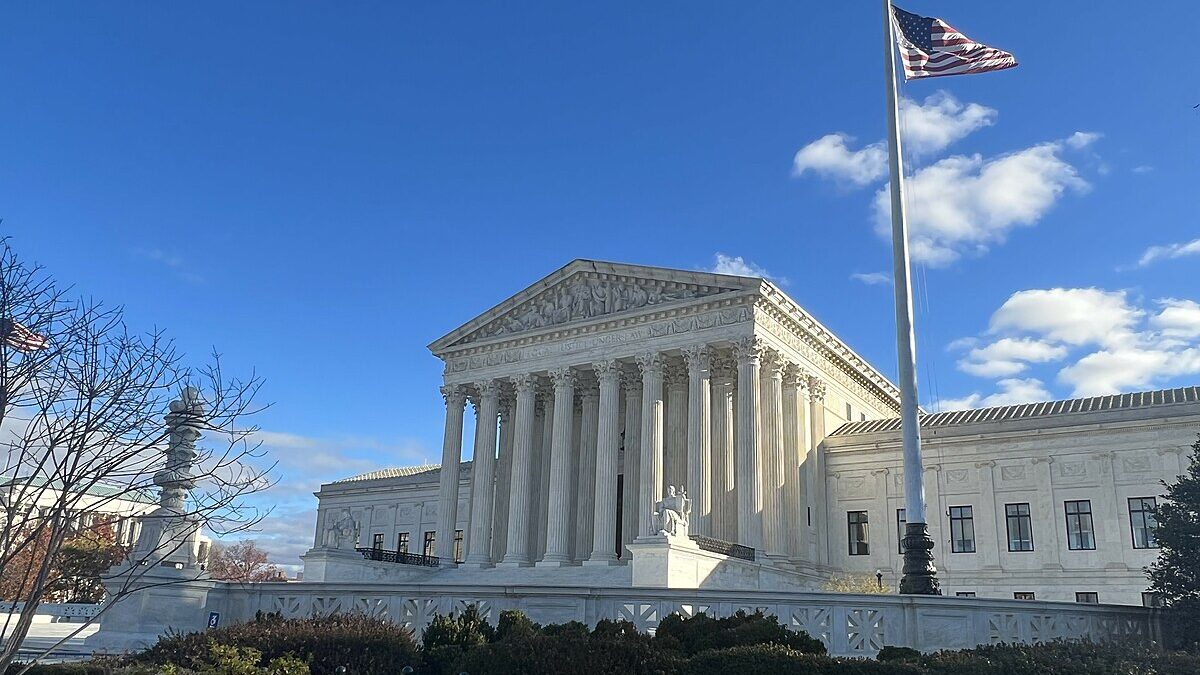
Thursday morning, the Supreme Court ruled 7-2 in American Legion v. American Humanist Association that a 100-year-old World War I memorial cross in Bladensburg, Maryland, doesn’t “establish” religion. That’s the correct result (read my brief for Cato), but the mish-mash of opinions—it took a paragraph to explain which justice was joining which aspect of the decision—leaves Establishment Clause jurisprudence in the muddled state it’s been for decades.
That is, much like in the Ten Commandments cases of 2005, the cross here survived largely because it’s really, really old. Justice Samuel Alito, joined in full by Chief Justice John Roberts and Justices Stephen Breyer and Brett Kavanaugh, and in all but two subparts by Justice Elena Kagan—Justices Clarence Thomas and Neil Gorsuch concurred in the judgment, but wrote separately—offered four reasons for a “strong presumption of constitutionality” in favor of “retaining established, religiously expressive monuments, symbols and practices.”
First, it’s “especially difficult” to identify the “original purpose or purposes” of such religiously expressive icons. Second, “as time goes by, the purposes associated with an established monument, symbol, or practice often multiply”; they may be maintained “for the sake of their historical significance or their place in a common cultural heritage.”
Third, the message they convey might also change over time. Consider, for example, the Statue of Liberty, Notre Dame cathedral in Paris, many American cities with religious names (Bethlehem, Penn.; Las Cruces, New Mexico; Corpus Christi, Texas; etc.), Arizona’s state motto (Ditat Deus, or “God enriches”), and Maryland’s cross-filled flag.
Fourth, removing a historic monument “may no longer appear neutral,” but provide evidence of anti-religious animus. As Alito put it in one of the passages that likely led Breyer and Kavanaugh to call the opinion “eloquent” and Kagan to “find much to admire”: “A government that roams the land, tearing down monuments with religious symbolism and scrubbing away any reference to the divine will strike many as aggressively hostile to religion.”
Alito then explained how these four considerations apply to crosses such as WWI memorials, including the “solemn image of endless rows of white crosses” and the popularity of the poem “In Flanders Fields.” The Bladensburg Cross fits into that narrative. As Justice Antonin Scalia might have put it, this war memorial comes as a war memorial.
Justice Alito’s majority opinion thus does well not to apply the beleaguered Lemon test—looking to the purpose and effects of government action, as well as “entanglement” with religion—but in squeezing that sour fruit, he lost Justice Elena Kagan’s vote and thus his majority (leaving a plurality). Still, with Justice Gorsuch (joined by Justice Thomas) saying that Lemon is now “shelved” and Justice Kavanaugh noting that “the Court no longer applies the old test articulated by Lemon . . . [which is] not good law,” it’s clear that this nearly 50-year-old case is pretty much obsolete.
Alito himself noted that Lemon “presents particularly daunting problems in cases, including the one now before us, that involve the use, for ceremonial, celebratory, or commemorative purposes, of words or symbols with religious associations.” Moreover, as Kavanaugh explained, Lemon doesn’t inform Supreme Court decisions in other Establishment Clause contexts either, whether regarding religious accommodations in generally applicable laws, government benefits and tax exemptions for religious groups, religious expression in public schools, or the regulation of private religious speech in public forums.
Then why not go further and scrap Lemon explicitly? This area of law has long been plagued with judicial hand-waving at nebulous standards, producing results good for a particular case only, without real guidance about the kinds of actions regarding religion that governments can take (or allow to be taken on government property).
James Madison, arguably the Constitution’s most important framer, strongly opposed state religion because colonial Virginia was teeming with religious persecution. Preachers were jailed for simply publishing their religious views. The official state religion was integrated with many parts of the government.
This had a profound effect on Madison. When he wrote his draft of the First Amendment, Madison envisioned the Establishment Clause as the culmination of his philosophy on religion and government, with liberty of conscience as the centerpiece. His purpose was to ensure that people could exercise their faith free from compulsion. The Establishment Clause was thus a shield to defend “individual liberty of conscience.”
As justices Thomas and Gorsuch explain in their concurrences, the Supreme Court in future should return to the original public meaning of the Establishment Clause, which ensures liberty of conscience and protects people from truly “established” state religions that coerce belief and support. A non-coercive, harmless monument—a cross memorial, or a Star of David, or any other religious symbol—is not an establishment of religion. As seven justices correctly found here, tearing down an old war memorial instead establishes an anti-religious orthodoxy, with a mandate that religious symbols be eradicated from public life.
The Framers did not intend for that to happen, but maybe the fact that we’re fighting over ticky-tack things like this is a good indication that nobody in America is really trying to establish religion—compelling religious worship or financing, on penalty of state law—any more. The real dangers to the freedom of conscience now come more from government mandates and regulations that infringe on the free exercise of systems of belief, religious and secular alike. But that’s another case and another essay.









